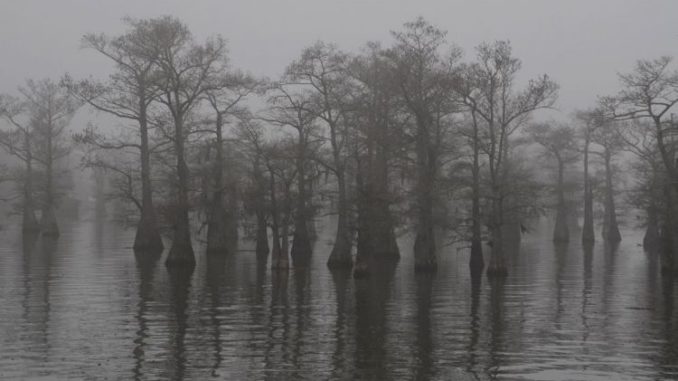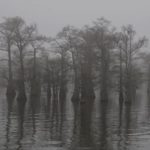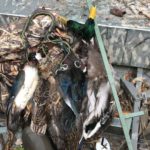
|This cypress-filled gem on the Louisiana-Texas |border offers up some great waterfowl hunting — |but knowing some of its idiosyncrasies beforehand |will up your odds of bagging a limit.|
Dawn was hauntingly beautiful.
No flamboyant sunrise color; rather a suffusion of light through the fog-veiled cypress trees. Todd Hopkins’ and Brandon Garner’s duck calls echoed off the fog as effectively as off a steel wall.
We were in Big Green Brake, an island of cypress trees sitting in the middle of the lizard-shaped lake on the Louisiana-Texas border northwest of Shreveport.
The big lake is famous for its largemouth bass fishing — “one of the best lakes in the region,” said Hopkins. “Yup,” chimed in Garner, “there are lots of 10-pounders here.”
But it wasn’t bass we were here for; it was ducks. And I was with experts.
Hopkins, Clerk of the Caddo Parish Commission, the governing body of Caddo Parish, is at age 53, a 35-year duck hunter. He lives on the lakeshore and hunts with friends who have permanent blinds (more on that later), and has a boat-blind himself. He hunts something every weekend of hunting season.
Garner, 33, is also an addicted hunter. “I love it,” he gushed, while admitting that he hunted ducks 40 of last season’s 60 days. The firefighter paramedic hunts squirrels from their opening in early October until gun season for deer. He hunts deer until duck season, then nothing but ducks.
He arranged for today’s hunt in a friend’s blind in the lake.
The final member of the trio is 42-year-old Kelly Wells, the executive director for the Shreveport-Bossier Sports Commission. Part of his job is to promote awareness of hunting and fishing opportunities in Caddo and Bossier parishes. He’s the guy to call (888-458-4748) to arrange for a fishing guide for the area’s lakes and rivers.
Wells hunts deer, squirrels, doves, and ducks, with much of his duck hunting taking place on the Red River.
Permanent blinds on a public lake
The blind we were in was a Cadillac — solid 2 X 4 framing plated with roofing tin and heavily brushed with willow branches. The backside of the blind had a spacious “boat hide” constructed of brushed hog wire fencing stretched over a 2 X 4 frame.
The permanent blind on a public lake brought up an interesting point. “We have unique customs here,” explained Hopkins. “When someone gets in someone else’s blind, that’s a potential problem, especially if there are decoys out in front.”
Garner nodded vigorously in agreement.
The lake has many such private blinds. No legal ownership rights exist, but in the Caddo Lake hunting world, de facto ownership of the blinds is recognized.
“Someone getting into someone else’s blind doesn’t happen often in this lake,” said Hopkins.
But that doesn’t mean that newcomers can’t hunt the lake, assured Wells. “Using a pop-up blind on a boat provides a lot of opportunity. You can set up in more areas and you can move during the hunt if the ducks aren’t using your area.”
“People need to scout before hunting here. It’s key,” nodded Garner in affirmation. “Google Earth is a good place to start; then ride and look.”
“You need to get in a boat,” agreed Hopkins. “Jeem’s Bayou, also known as James Bayou, has the most opportunities for free-lancers. There are not a lot of permanent blinds there.
“I wouldn’t recommend anyone not from here to build a permanent blind to start.”
Options for “free-lancers,” as Hopkins called them, are hunting with the use of pop-up boat blinds, floating blinds or simply wading into the trees fringing the edge of the lake.
Near the end of the hunt, Garner demonstrated one of the advantages to hunting from a roomy permanent blind. He ducked under the roofed-over section of the blind and lit a propane burner under a frying pan.
In a jiffy, the hunters were happily stuffing their faces with breakfast tacos that he prepared.


